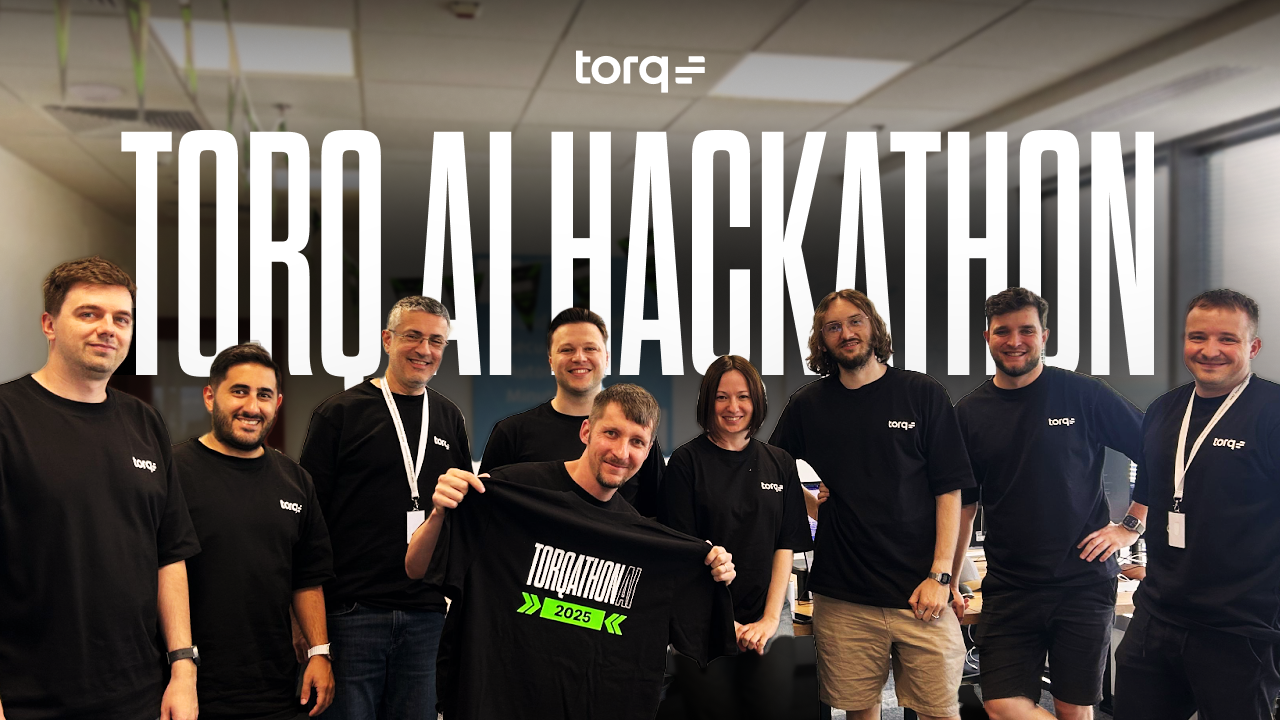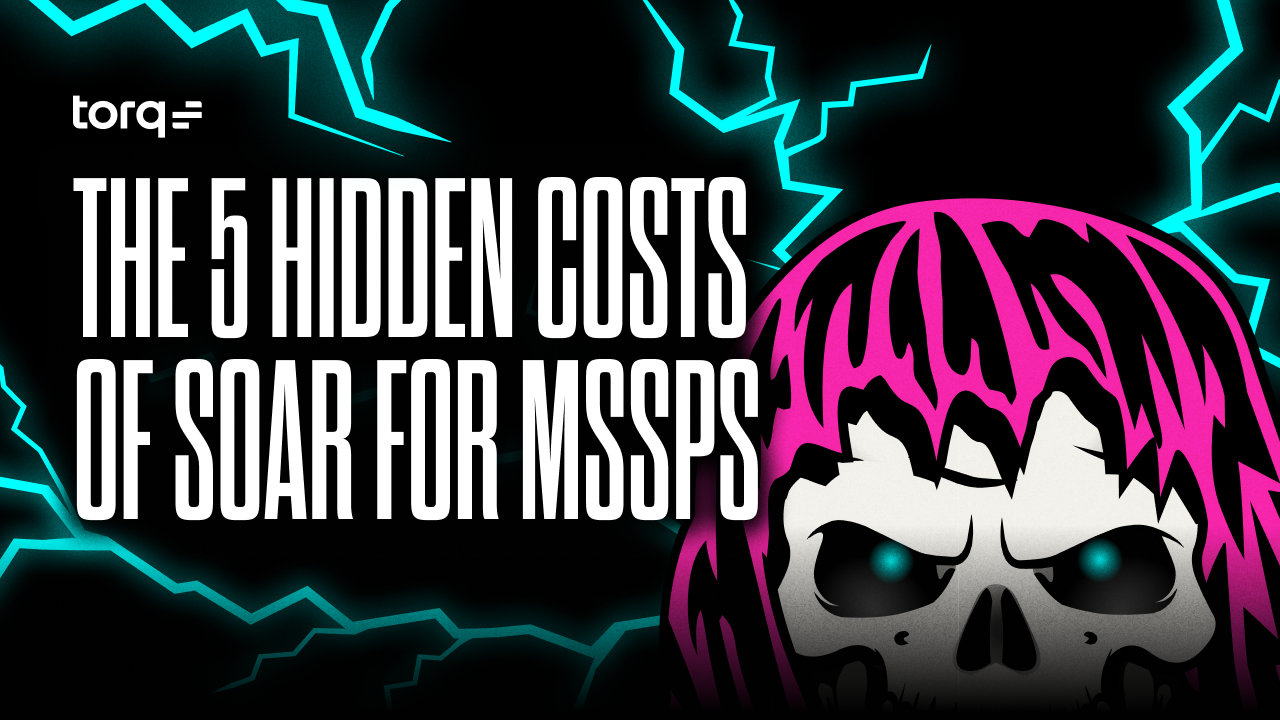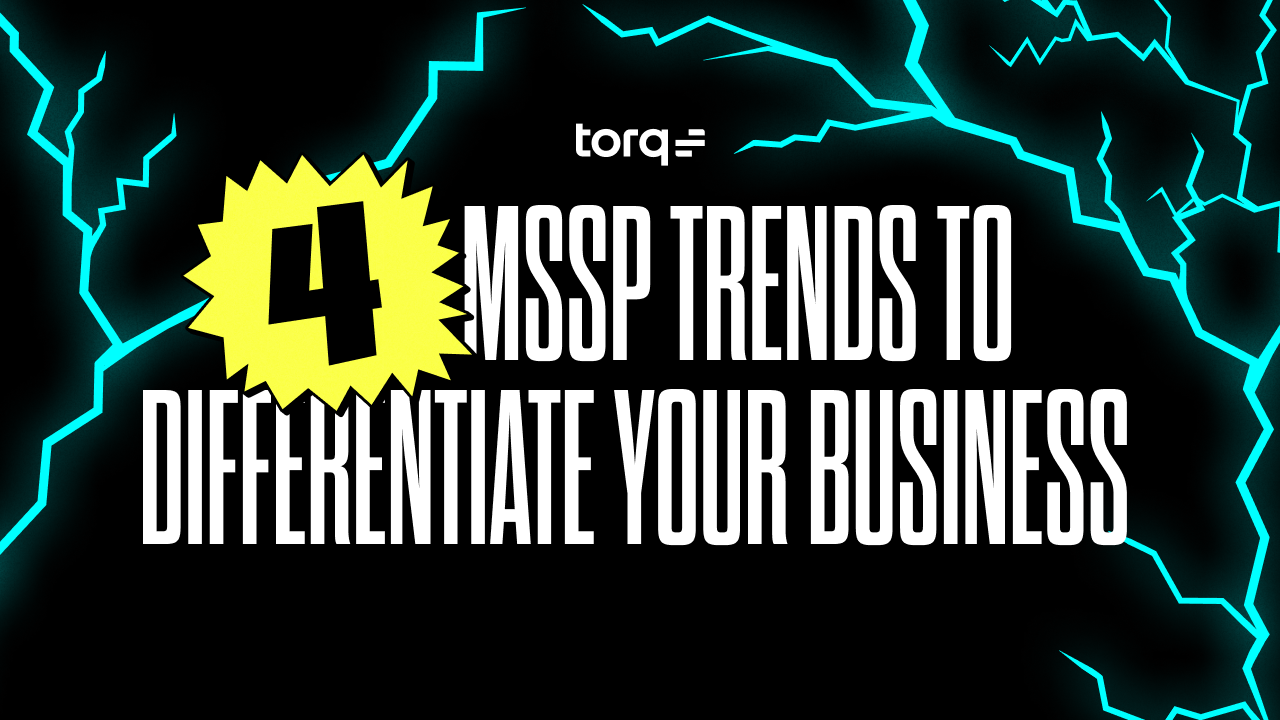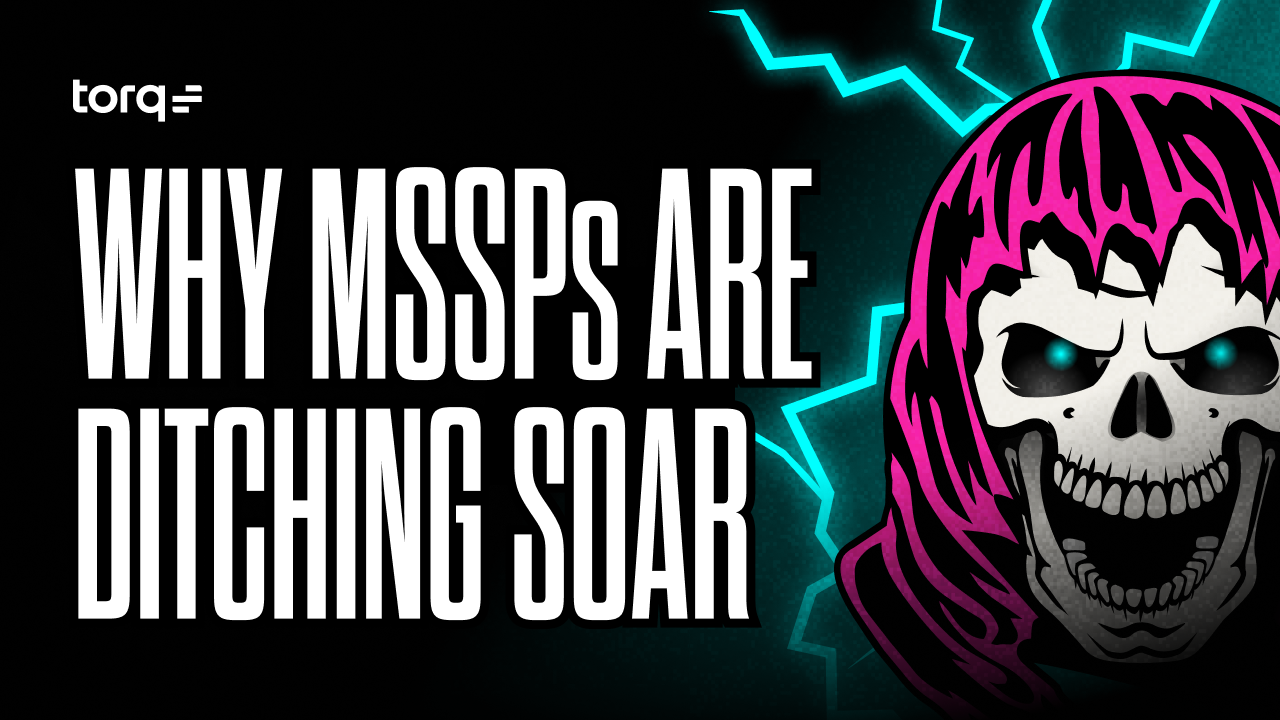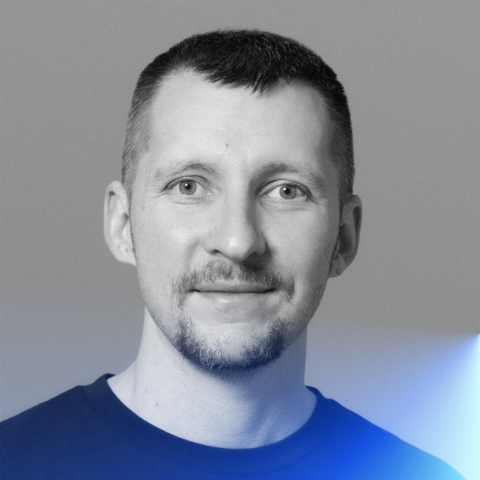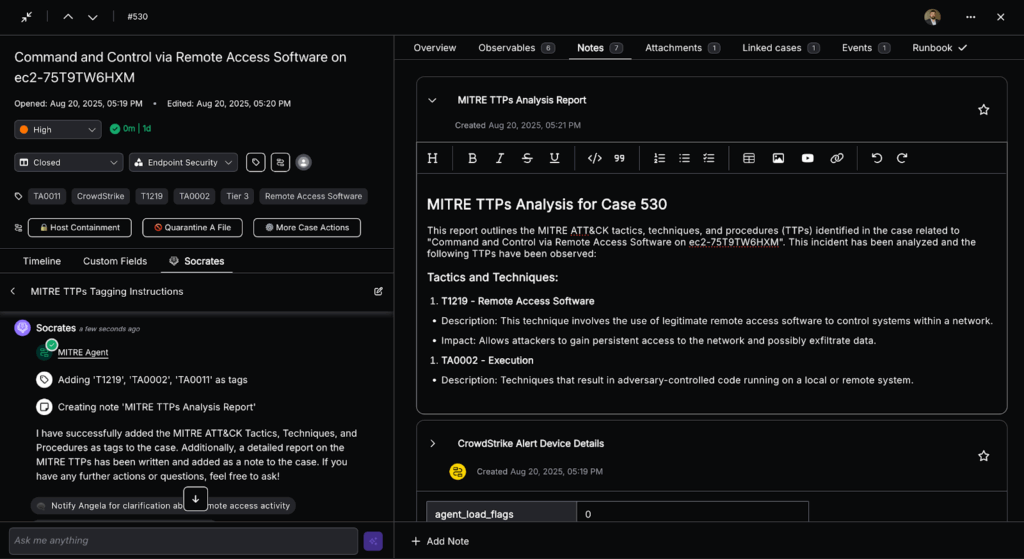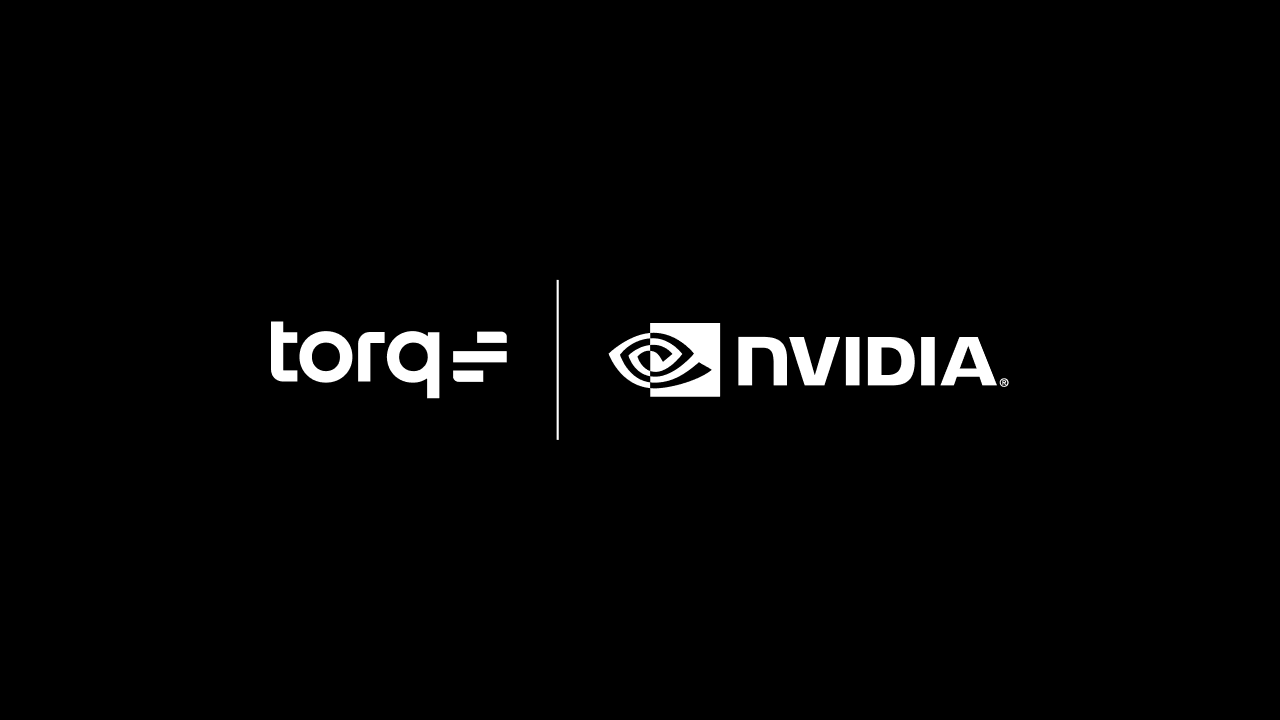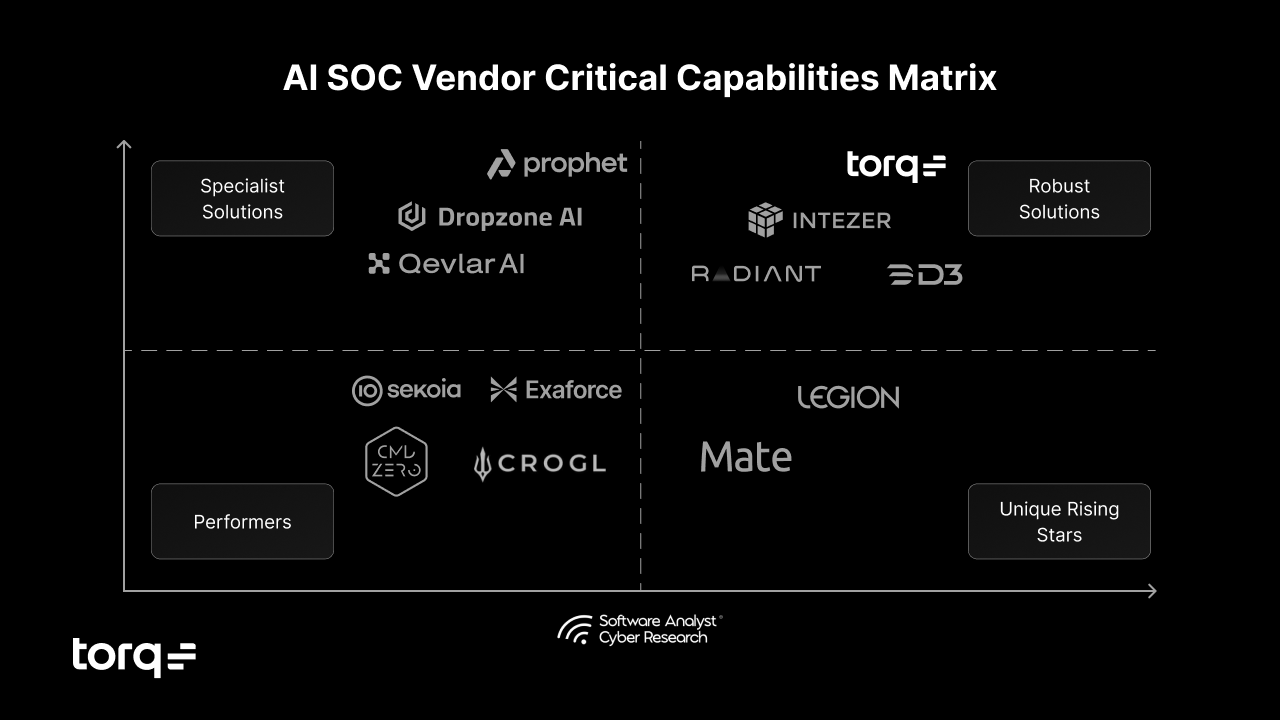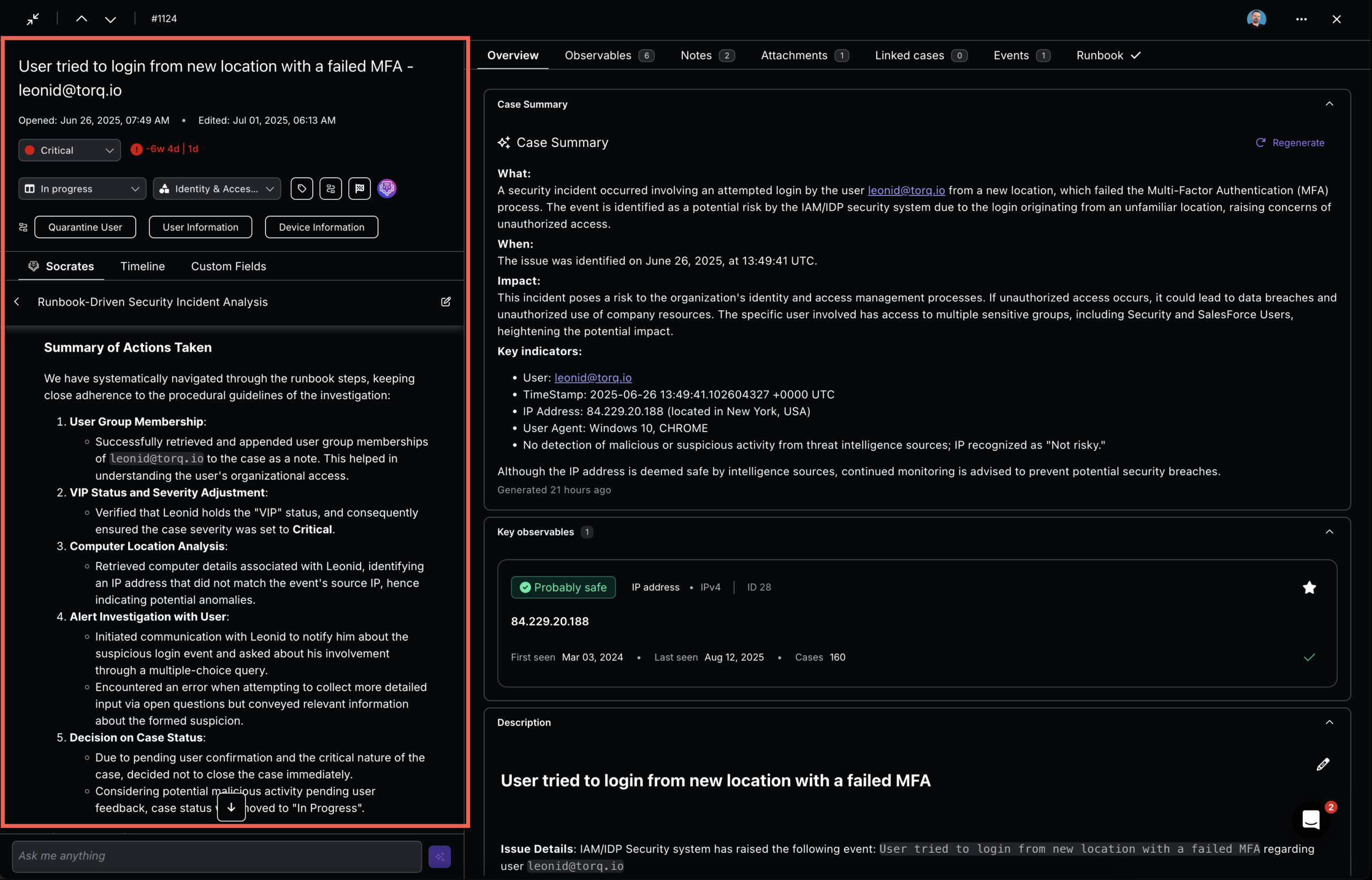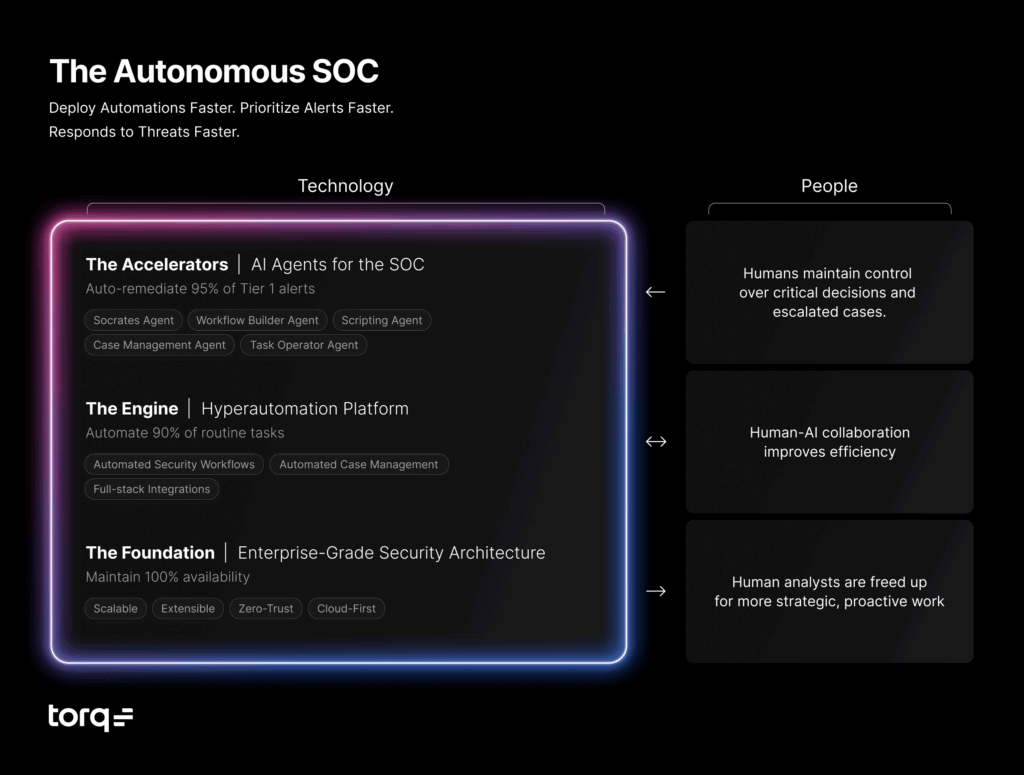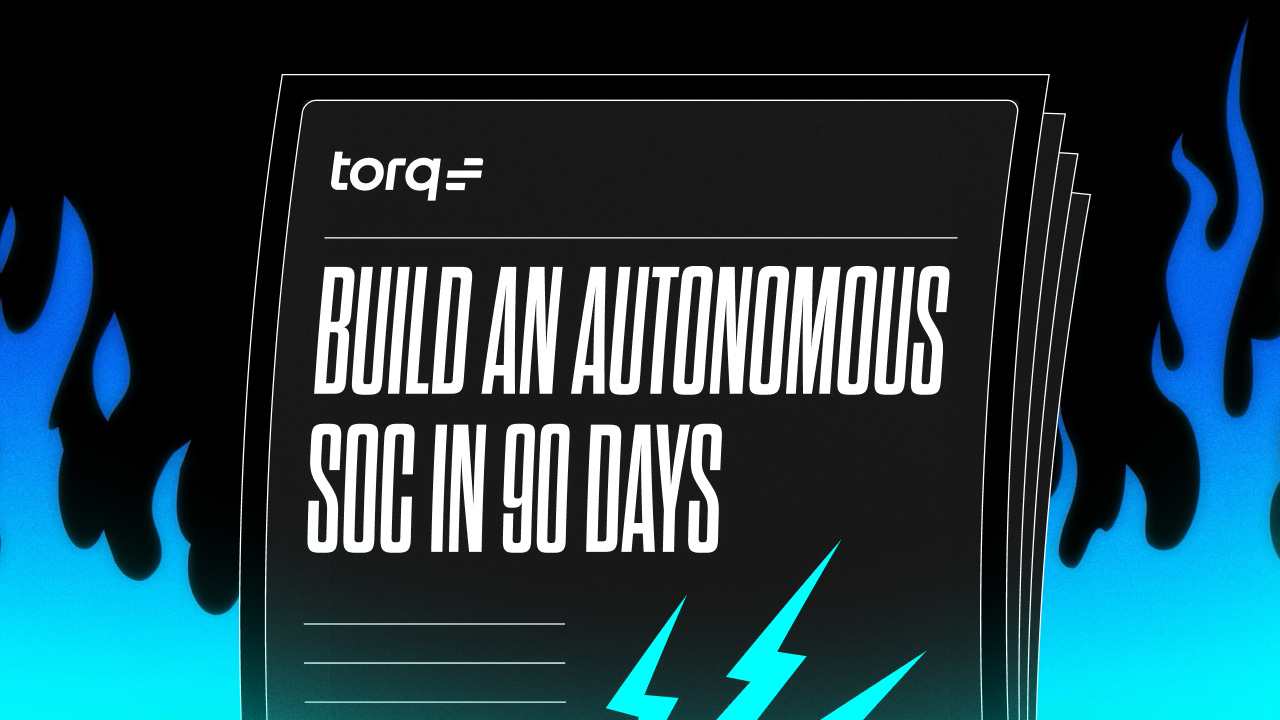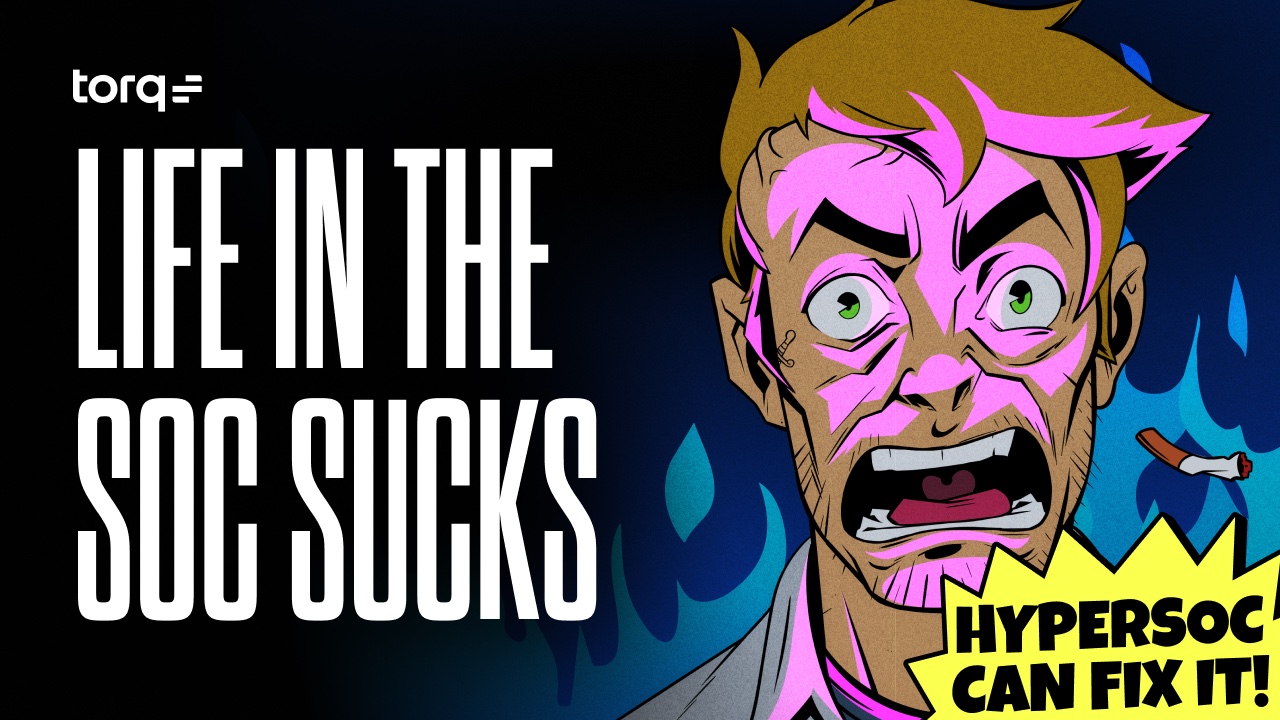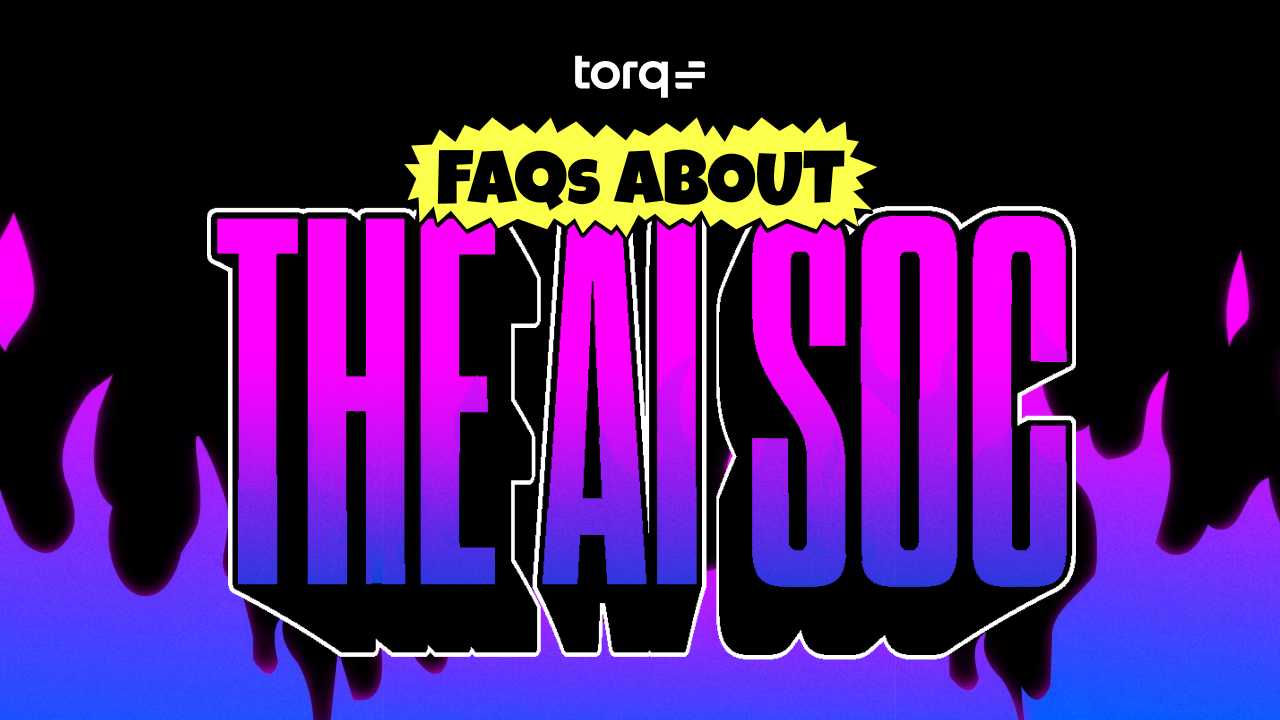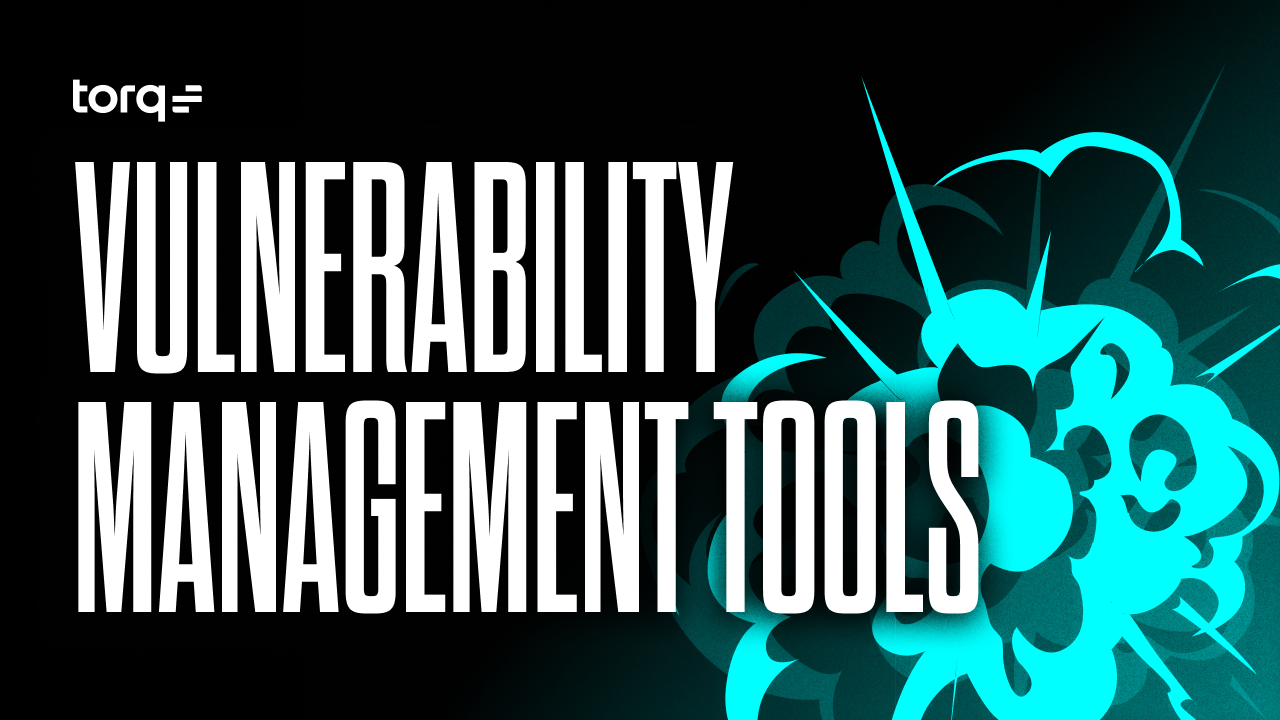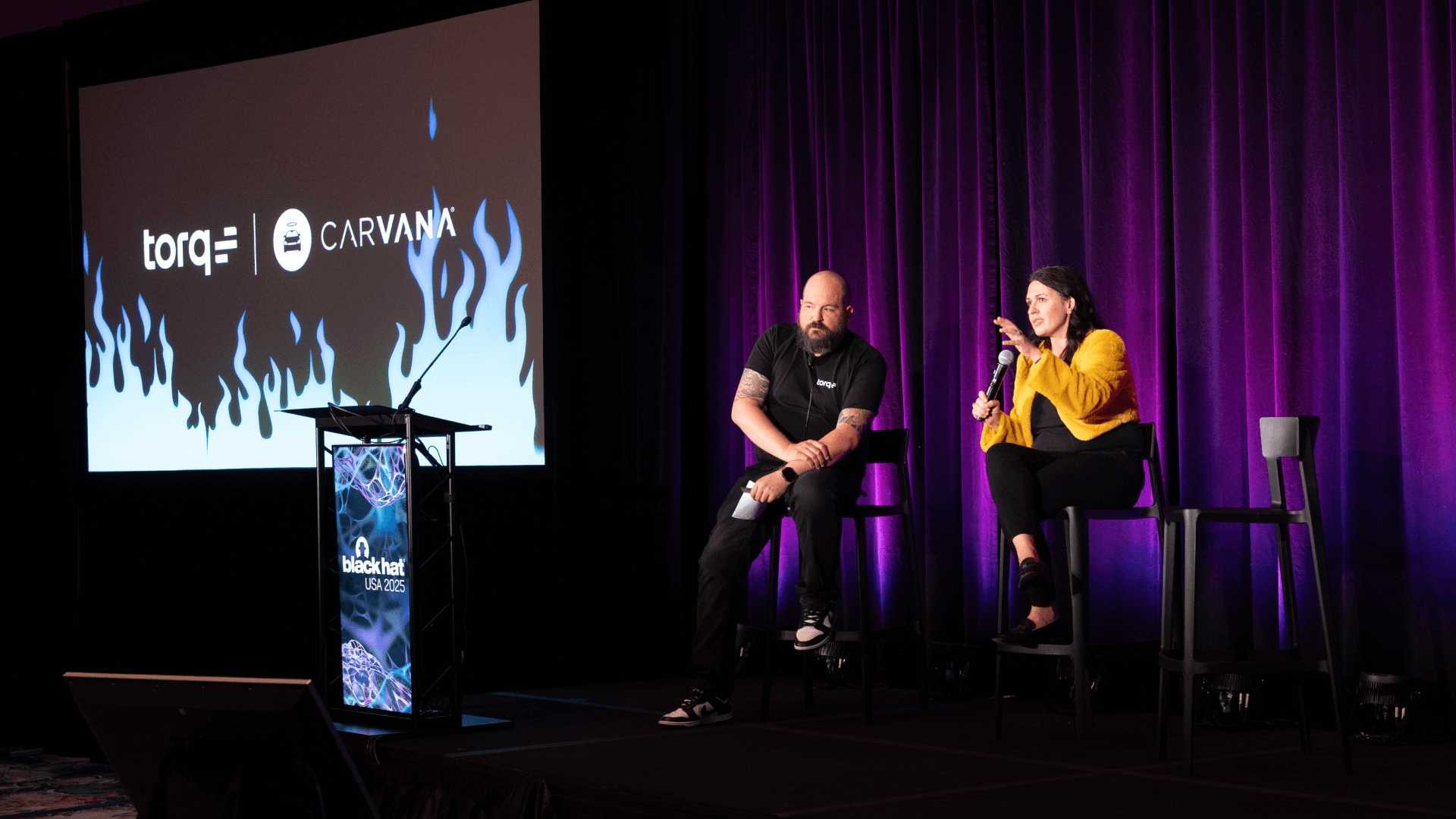Contents
Security operations shouldn’t be defined by burnout, backlog, and brittle tools. Torq HyperSOC™ replaces the slow, manual SOC model with an autonomous system powered by agentic AI, Hyperautomation, and seamless stack integration.
In just 90 days with Torq, security teams move from reactive to proactive — automating Tier-1 triage, accelerating response, and freeing analysts to focus on what matters most.
The 90-Day Path to SOC Autonomy
30 Days: Kickoff, Connect, and Ship Quick Wins
In the first 30 days with Torq, the focus is on standing up the platform, connecting your stack, and shipping quick wins. Guided by a dedicated Torq team, your SOC enables SSO and role mapping, lights up core integrations like M365/Defender, Okta/Entra, CrowdStrike, Slack, Jira, AWS, etc, and launches the first workflows — phishing triage, EDR alert handling, or cloud misconfiguration detection.
During this phase, your builders are also trained on workflow design, testing, and debugging. By the end of the first month, automations are live, Tier-1 alert noise is already dropping, and analysts are reclaiming hours once lost to swivel-chair triage.
60 Days: Scale Coverage, Standardize, and Measure
In the next thirty days, the focus shifts to scaling and simplifying. A second wave of workflows expands coverage into IAM offboarding, IOC enrichment, login anomaly detection, and user behavior signals. Socrates, Torq’s AI SOC Analyst, is deployed to handle Tier-1 triage, enrichment, and case summaries.
Teams tune thresholds, implement deduplication and correlation rules, and adopt modular subflows and templates to accelerate workflow reuse — especially valuable for MSSPs managing multiple tenants. Automation KPIs like MTTR, suppression rate, and analyst touches per case are established to measure impact. At this stage, broader automation coverage reduces false positives, alert fatigue decreases, and builders independently ship new workflows.
90 Days: Autonomous with Humans on the Loop
By the end of three months, your SOC begins operating as an autonomous system with human-in-the-loop guardrails. Socrates orchestrates the entire case management lifecycle from ingestion through enrichment, correlation, decision, response, and documentation. Analysts only step in for escalated incidents. Standard operating procedures and runbooks are finalized, intake and closure criteria are standardized, and before-and-after benchmarking is completed to prepare for the first quarterly business review (QBR).
The outcomes are transformative: up to 90% of Tier-1 alerts are automated end-to-end, MTTR drops by more than 60% on core use cases, and analysts shift from reactive case handling to proactive oversight, threat hunting, and strategic improvements.
What to Measure in the First 90 Days of Your AI SOC
Adopting Torq isn’t just about improving detection and response; it’s about proving measurable business impact within the first 90 days. Here are the key metrics to track:
- MTTR/MTTI: Compare before-and-after times across common use cases to demonstrate immediate efficiency gains.
- Automation coverage: Track the percentage of Tier-1 alerts that Torq fully handles end-to-end. Mature customers often see ~90% automation coverage by day 90.
- Suppression rate: Measure how many false positives are automatically identified, documented, and closed with retained evidence — cutting analyst workload and improving accuracy.
- Analyst touches per case: For Tier-1 incidents, the target is near-zero touches. Analysts should only step in for risk-gated actions or escalations.
- Onboarding hours per tenant (MSSPs): For managed services, this is a critical margin lever. Track the reduction in time to first value when onboarding new customers.
- Tool consolidation savings: Document scripts, point automations, and legacy SOAR licenses retired as Torq unifies orchestration into a single platform.
- Audit readiness: With evidence generated automatically in real time, compliance prep shifts from weeks of manual effort to hours of reporting.
Torq ensures customers hit these ROI milestones with a dedicated team, JumpStart implementation accelerators, and the Torq Academy training program. Teams also have 24/7 access to the Torq Knowledge Base for self-service support. This combination of hands-on guidance and self-service enablement ensures both rapid adoption and long-term maturity.
90-Day Autonomous SOC Wins From Torq Customers
Valvoline: Saving Analysts 6–7 Hours a Day
When Valvoline’s security team faced major resource constraints during a corporate divestiture, they needed a platform that could help them do more with fewer analysts. Within just one week of deploying Torq, Valvoline was up and running on its top-priority use cases, including phishing response and EDR alert handling.
Torq’s no-code workflows immediately cut down on repetitive triage work, saving analysts between six and seven hours every single day. A Rapid7 integration that had stalled for months under their legacy SOAR was delivered in just days with Torq, proving the platform’s ability to integrate seamlessly and deliver value fast.
Learn how to easily migrate from SOAR to Torq >
Global Health and Wellness Company: Proving SOC Value with Data in 60 Days
A global health and wellness company needed a way to bring visibility and maturity to its in-house SOC. With Torq, they stood up full end-to-end case management in just six weeks, consolidating data across SIEM, cloud, and identity tools. Within two months, the team had automated 89% of cases and reduced MTTR by 60%.
Beyond efficiency gains, Torq’s case taxonomy and structured workflows gave this organization the ability to present clear, data-driven ROI narratives to executives, transforming the SOC from a reactive cost center into a proactive value generator.
HWG Sababa: Doubles SOC Output Without Adding Headcount
Italian MSSP HWG Sababa serves customers across Europe, the Middle East, and Central Asia. Before Torq, their analysts were drowning in manual Tier-1 tasks, struggling to meet customer SLAs without expanding headcount. By deploying Torq Hyperautomation™, HWG Sababa automated 55% of their monthly alerts within weeks. MTTR dropped by 95% for low- and medium-priority incidents and by 85% for high-priority threats.
This surge in security automation nearly doubled the SOC’s operational capacity, allowing analysts to focus on advanced investigations and strategic work while still delivering faster, more consistent outcomes to customers.
Global Online Money Transfer Platform: Cuts Alert Handling Time by 30%
A leading financial services provider replaced its in-house threat management system with Torq Hyperautomation and saw immediate results. Within days, the team unified its entire security stack — AWS, Microsoft 365, Active Directory, SentinelOne, and more — into Torq’s platform.
The outcome: 30% time savings, 90%+ of alerts automatically investigated and remediated, and IAM tasks reduced from a full day of work to just three minutes. With enterprise-grade, multi-tenant architecture meeting strict regulatory demands, the company now scales security operations efficiently without adding headcount, all while maintaining compliance across global finance regulations.

Why Customers Ramp Up Fast with Torq HyperSOC
Agentic AI (Socrates): At the core of Torq HyperSOC™ is Socrates, our AI SOC Analyst, designed to handle the full case lifecycle for Tier-1 and Tier-2 incidents. Socrates automatically triages incoming alerts, enriches them with context from threat intelligence and internal data sources, documents every step, and even remediates routine cases without human intervention. By offloading repetitive triage and investigation tasks, Socrates drastically reduces MTTR while ensuring every action is logged, auditable, and defensible. Analysts are only engaged when higher-value judgment or escalations are required.
No-code/low-code and AI workflow builder: Torq empowers both analysts and engineers with a no-code/low-code and AI workflow builder, while still offering full-code capabilities for team members who want to go deep. Teams can design and deploy complex workflows in hours instead of weeks using a drag-and-drop canvas. Reusable subflows and golden templates accelerate scale, while audit-ready logging ensures every action is captured for compliance and accountability. This approach eliminates the need for scarce developer resources while allowing security teams to easily adapt and expand their automations as threats evolve.
300+ prebuilt integrations: Torq connects to virtually any tool in the modern SOC ecosystem, with hundreds of prebuilt integrations covering SIEM, EDR/XDR, IAM, cloud platforms, ITSM systems, email and chat, and threat intelligence sources. Torq offers containerized and custom connectors for niche or proprietary tools to ensure nothing is left out. This deep integration library makes Torq the connective tissue of your SOC, breaking down silos and ensuring every system can work together in real time.
Built for scale: Unlike legacy SOAR, Torq is designed for modern enterprise and MSSP scale. Its multi-tenant, event-driven architecture supports seamless onboarding across multiple environments without duplicating infrastructure. Workflows execute in parallel at massive scale, enabling real-time enrichment and response even in the face of thousands of daily alerts. Enterprise-grade role-based access control (RBAC) and single sign-on (SSO) provide the governance and security compliance needed to run automation at scale across complex organizations and managed service environments.
Get Your SOC Autonomous in 90 Days
If you’re building a modern SOC, you don’t need more dashboards — you need outcomes.
In 90 days, Torq HyperSOC turns “too many alerts, too little time” into a repeatable, autonomous system: ~90% of Tier-1 handled end-to-end, MTTR slashed, and analysts freed up for threat hunting and strategy. Socrates drives the case lifecycle, the no-code and AI workflow builder scales your best practices, and 300+ integrations make your entire stack work as one.
Stop fighting backlog with headcount. Start operationalizing automation with guardrails, evidence, and real ROI your leadership can see by the next business quarter.




